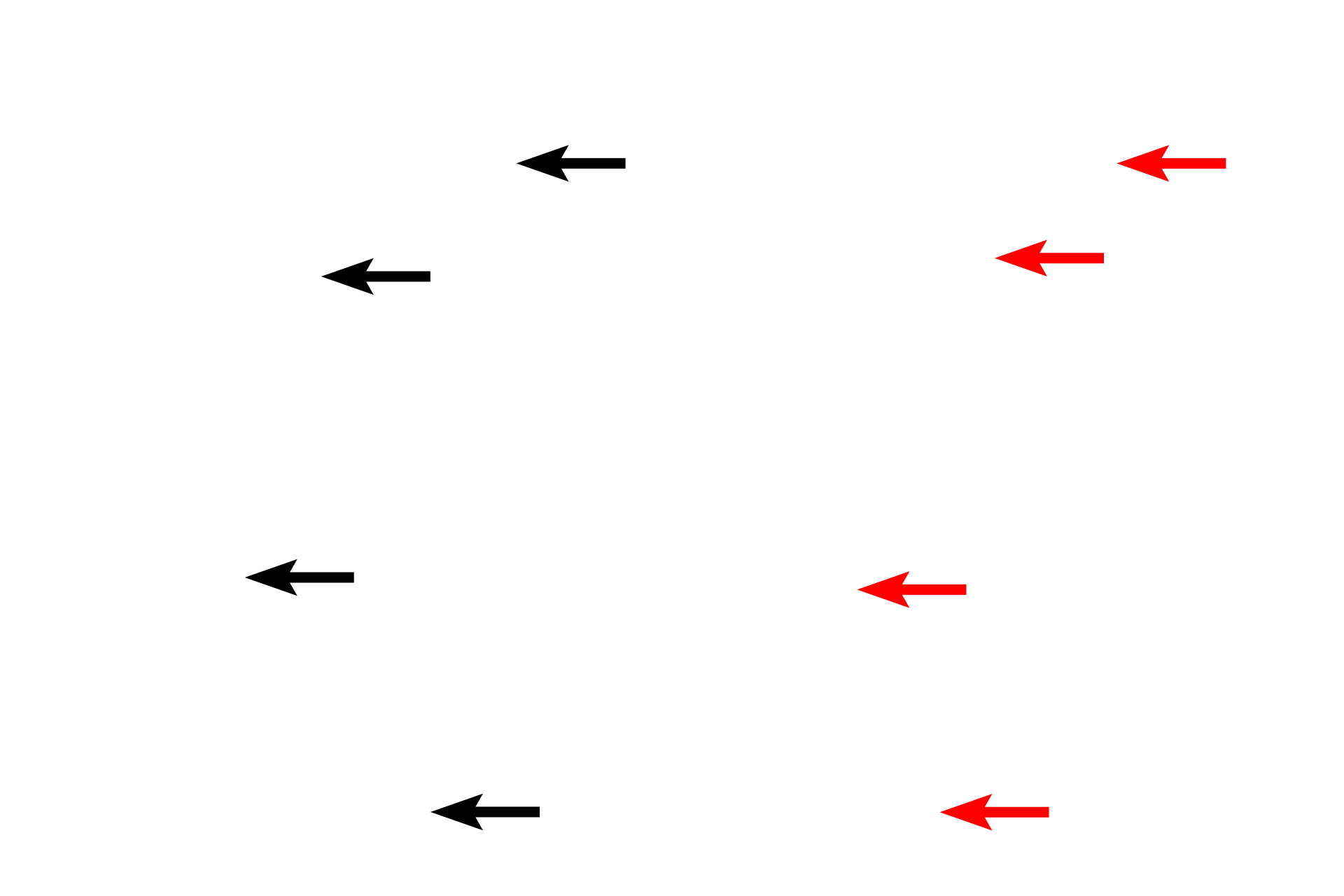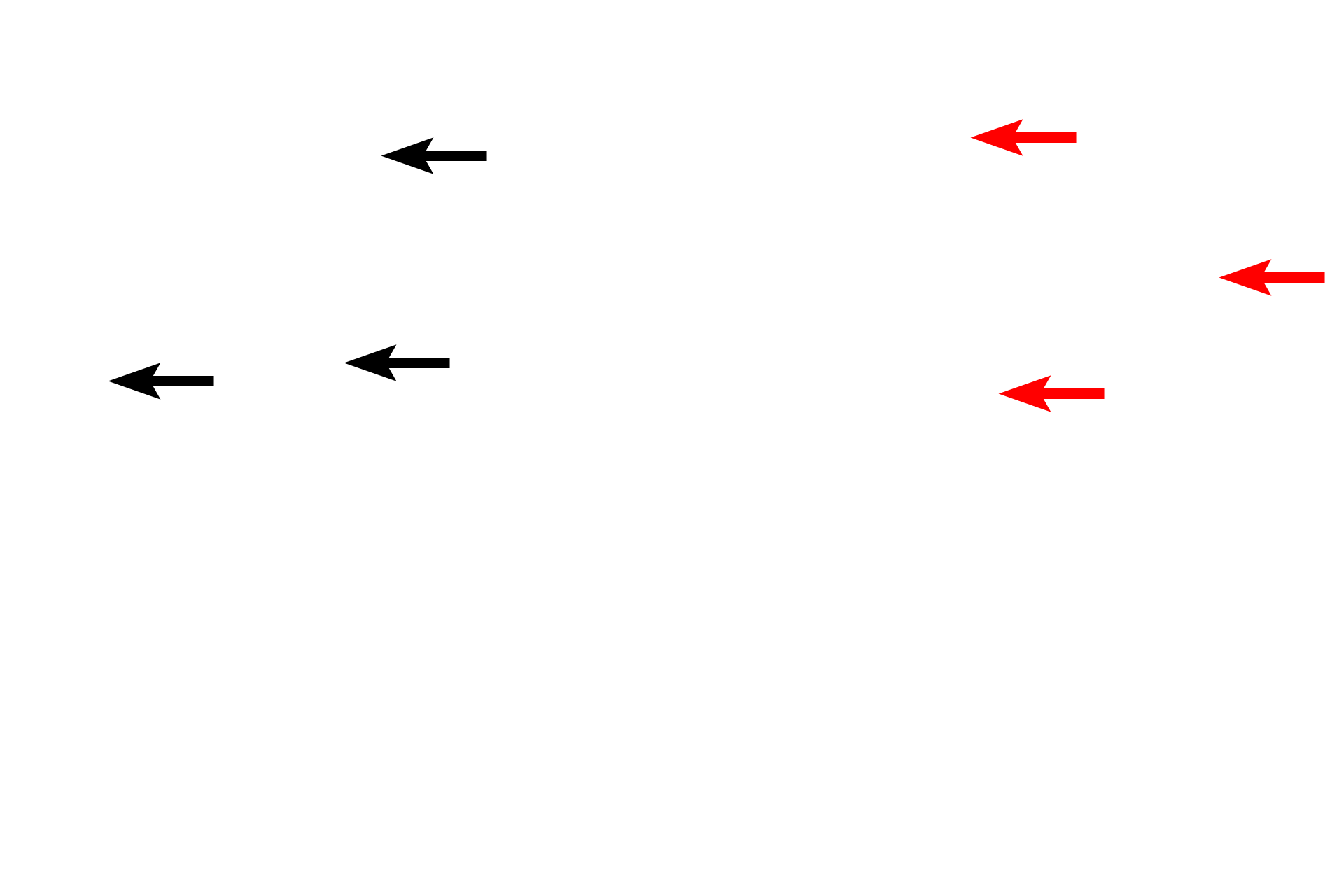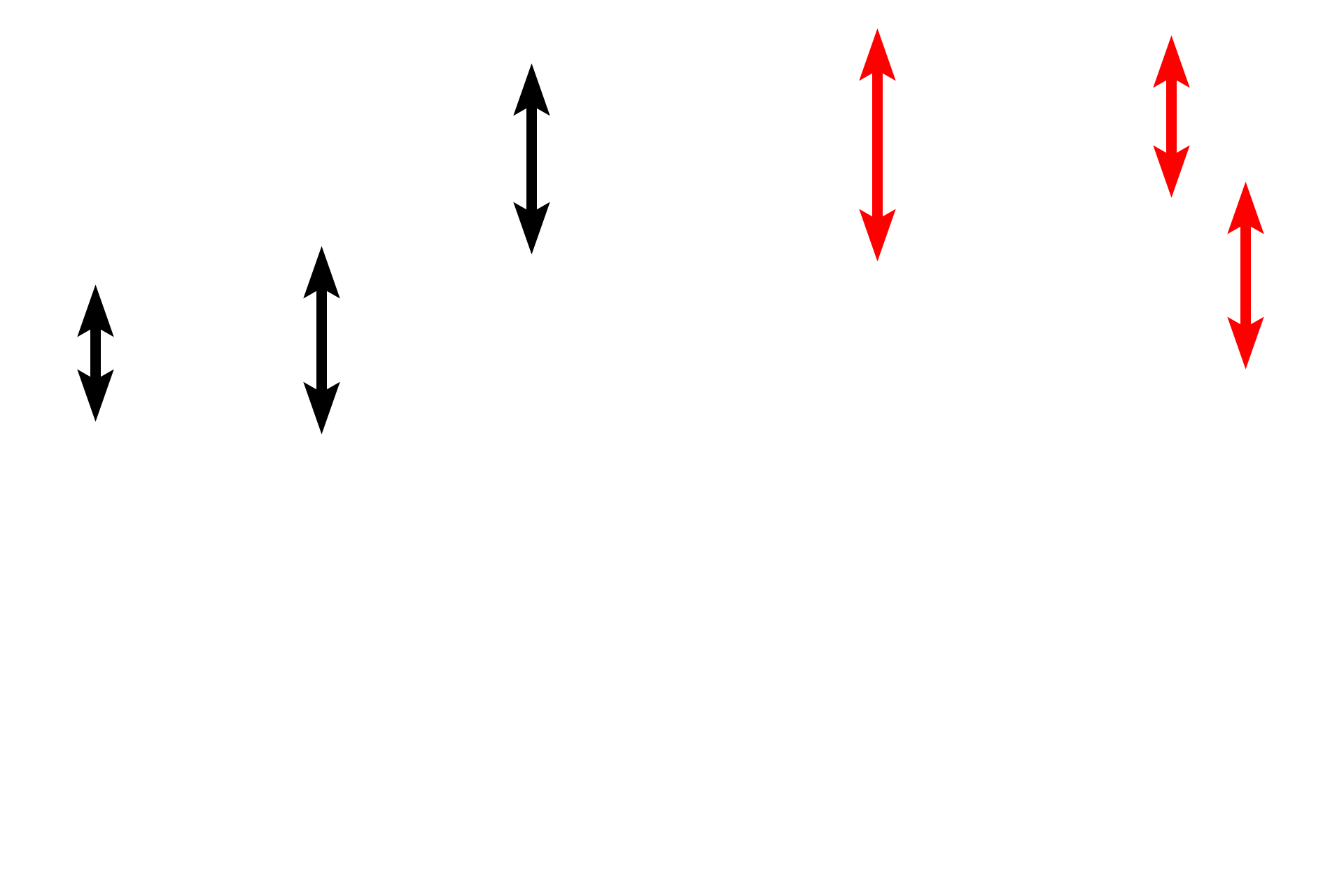
Bone tissue preparation
This composite shows the two procedures by which bone tissue is prepared for microscopic viewing. While each procedure has advantages, neither presents a complete image of bone. Therefore, when studying bone, try to imagine the appearance of both preparations, while viewing only one. 300x, 300x

Decalcified bone >
In a decalcified bone preparation, the organic matrix (fibers and ground substance) and cells are preserved (fixed). The inorganic matrix of calcium phosphate is removed either by treatment with dilute acids or calcium chelating agents. The tissue is then prepared like any other non-calcified tissue. While the cells and organic matrix are well preserved, the fine structure of the matrix is less evident.

Ground bone >
In a ground bone preparation, organic components are not preserved, so bone cells and organic matrix are not present. What remains is the inorganic matrix of calcium phosphate (hydroxyapatite). Internal spaces within the bone appear black in this preparation. To prepare this tissue, an unfixed bone is finely ground until it is thin enough to transmit light. The fine structure of the matrix is seen in excellent detail.

Osteocyte lacunae >
In the decalcified preparation, osteocytes are present and can be seen located in spaces called lacunae. In a ground bone preparation, the cells are no longer present, but their lacunae are readily apparent as black spaces.

Matrix >
The matrix of mature bone is highly ordered, organized into sheets or lamellae. Lamellae on the inner and outer surfaces of a bone, are arranged as flattened plates. In other areas, lamellae are concentrically arranged into cylinders (Haversian systems) that surround a lumen. For both, osteocytes are located in lacunae between the lamellae. Lamellae are better visualized in the ground bone preparation.

- Lamellae in plates >
Bone tissue on the inner and outer surfaces of a bone is organized into flattened plates. On the outer surface (seen here), they form the outer circumferential lamella; on the inner surface, they form the inner circumferential lamellae.

- Concentric lamellae >
In regions between the inner and outer circumferential lamella, the matrix is organized into the concentrically arranged lamellae that form Haversian systems.

-- Haversian systems
In regions between the inner and outer circumferential lamella, the matrix is organized into the concentrically arranged lamellae that form Haversian systems.